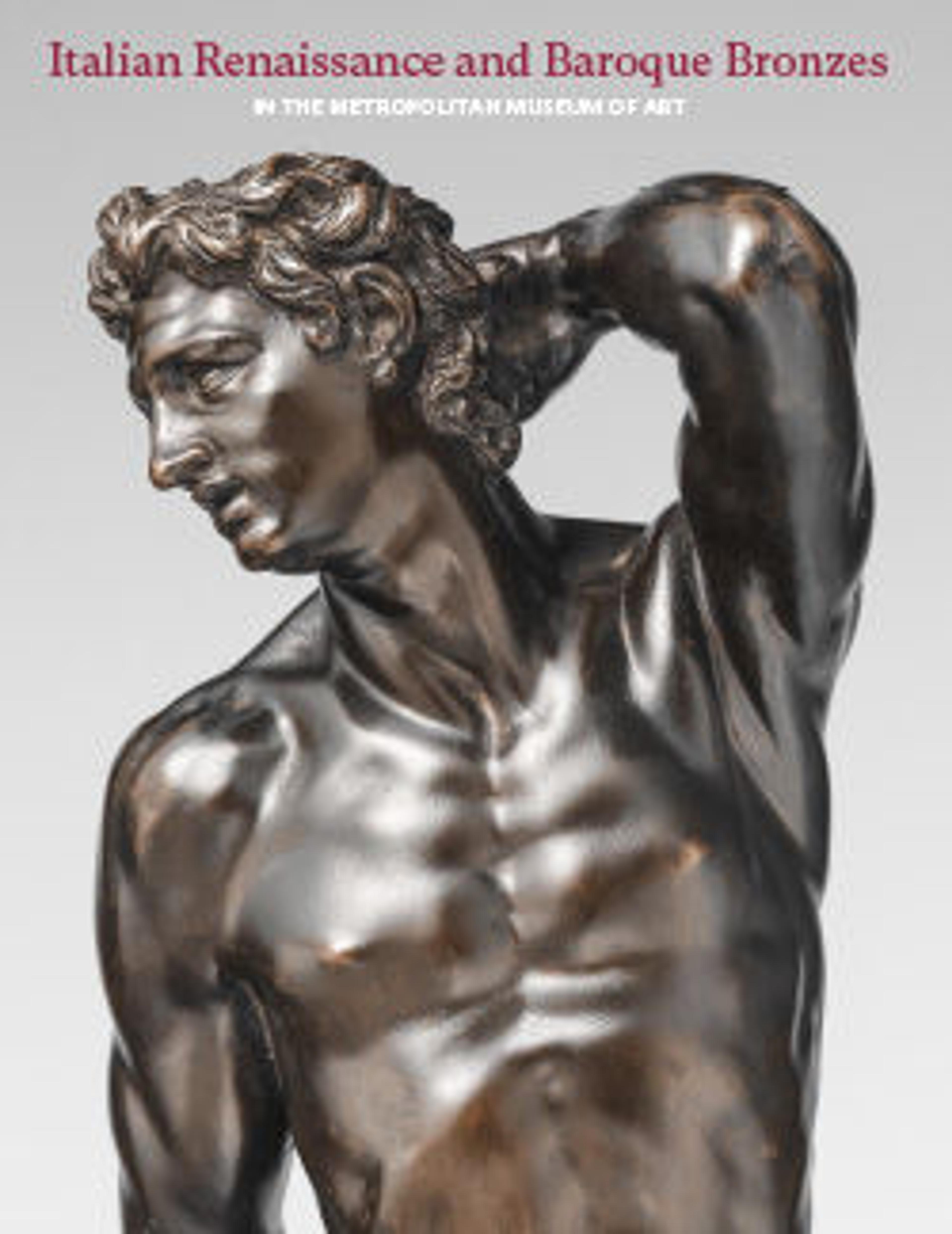Reclining female figure
The generically Michelangelesque figure wears a turbanlike helmet with short flaps at the back of the neck, a leathern peplum belted and gathered under the breasts and over the abdomen, a long skirt gathered at the knees, and midcalf boots. An old hole for affixing is under the right foot, and a modern drill hole passes through the middle of the underside. Wilhelm von Bode thought the model reflected an intervention by Teodoro della Porta on the marble allegorical figure of Justice (or Equanimity, or Fidelity) by his father Guglielmo della Porta on the tomb of Paul III in Saint Peter’s Basilica.[1] In 1594–95, Cardinal Odoardo Farnese had Teodoro fashion a camicia di metallo—a blouse or nightgown of metal—to mute the figure’s sexuality.[2] Guglielmo’s own drawing for the marble shows that he intended a tumbling coiffure and a drapery not all that revealing except for light indications of nipples.[3] The bronze figure is oriented in the opposite direction; there are no indications of the marble’s attributes, a flame and consular fasces; the costume is not suggestive of any particular allegory; and there is nothing of the quirky elegance of Guglielmo. Teodoro’s style is less easy to judge, but Bode’s idea has to be jettisoned.
-JDD
Footnotes
(For key to shortened references see bibliography in Allen, Italian Renaissance and Baroque Bronzes in The Metropolitan Museum of Art. NY: The Metropolitan Museum of Art, 2022.)
1. Bode 1910, vol. 2, p. 4, no. 119.
2. Cadier 1889, p. 80. Teodoro calls the figure Justice; its pair on the tomb is Prudence.
3. Gramberg 1964, vol. 1, pl. 196.
-JDD
Footnotes
(For key to shortened references see bibliography in Allen, Italian Renaissance and Baroque Bronzes in The Metropolitan Museum of Art. NY: The Metropolitan Museum of Art, 2022.)
1. Bode 1910, vol. 2, p. 4, no. 119.
2. Cadier 1889, p. 80. Teodoro calls the figure Justice; its pair on the tomb is Prudence.
3. Gramberg 1964, vol. 1, pl. 196.
Artwork Details
- Title:Reclining female figure
- Date:mid-16th century
- Culture:Italian, probably Rome
- Medium:Bronze, on a later wood base
- Dimensions:Overall (confirmed): 4 × 5 × 1 3/4 in. (10.2 × 12.7 × 4.4 cm)
- Classification:Sculpture-Bronze
- Credit Line:The Friedsam Collection, Bequest of Michael Friedsam, 1931
- Object Number:32.100.180
- Curatorial Department: European Sculpture and Decorative Arts
More Artwork
Research Resources
The Met provides unparalleled resources for research and welcomes an international community of students and scholars. The Met's Open Access API is where creators and researchers can connect to the The Met collection. Open Access data and public domain images are available for unrestricted commercial and noncommercial use without permission or fee.
To request images under copyright and other restrictions, please use this Image Request form.
Feedback
We continue to research and examine historical and cultural context for objects in The Met collection. If you have comments or questions about this object record, please contact us using the form below. The Museum looks forward to receiving your comments.
